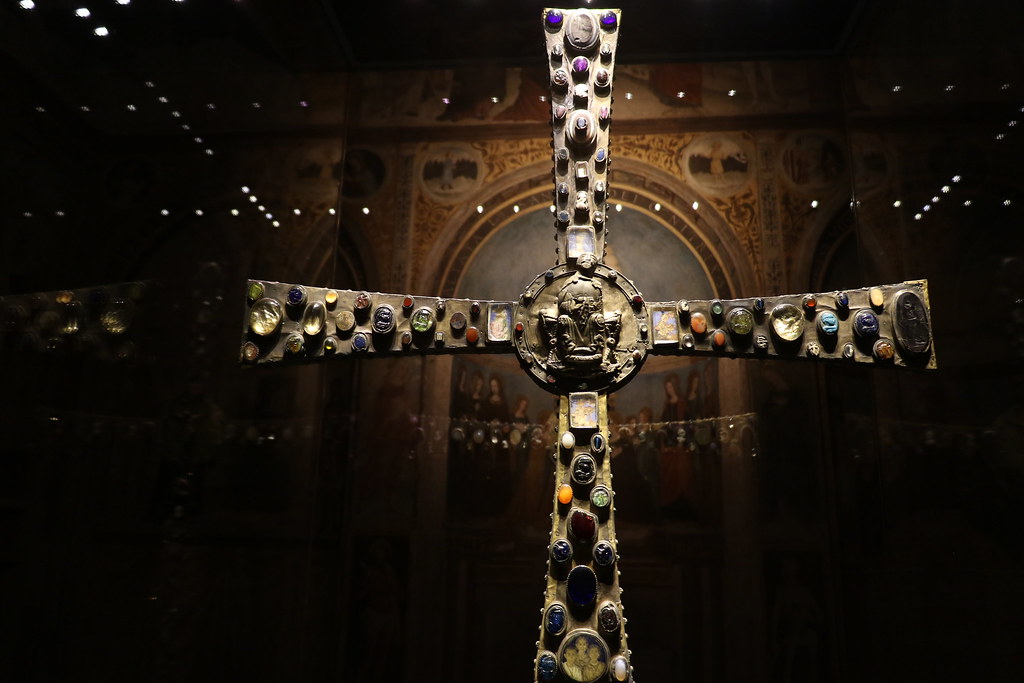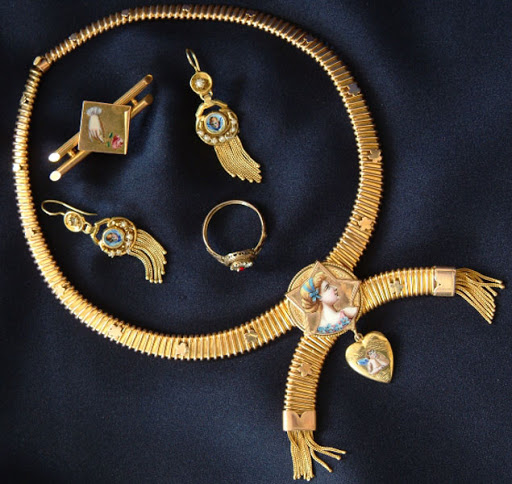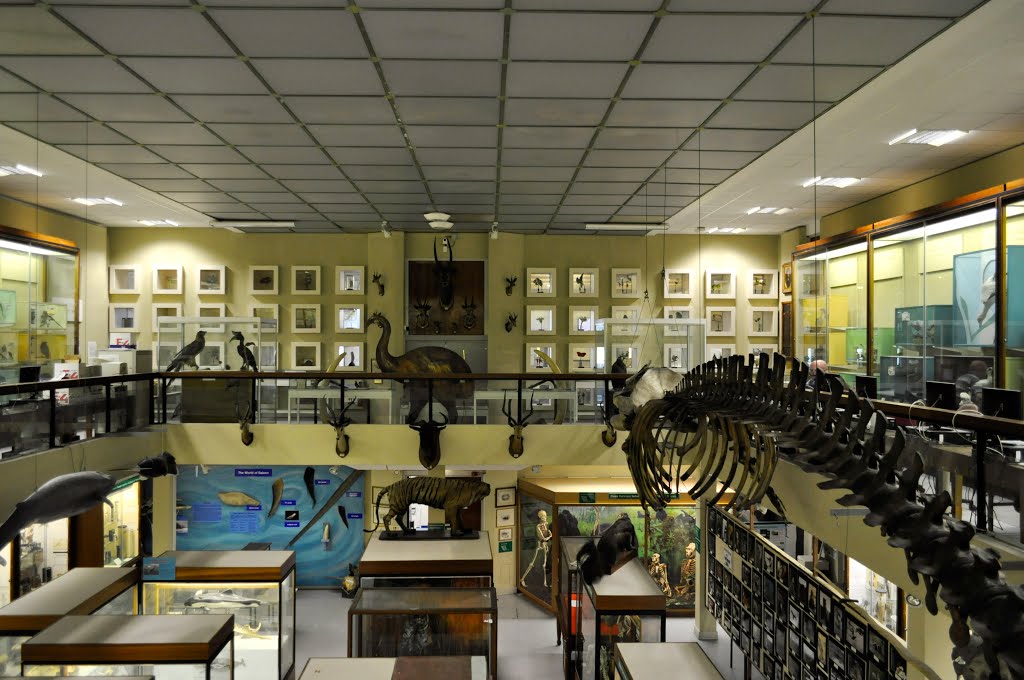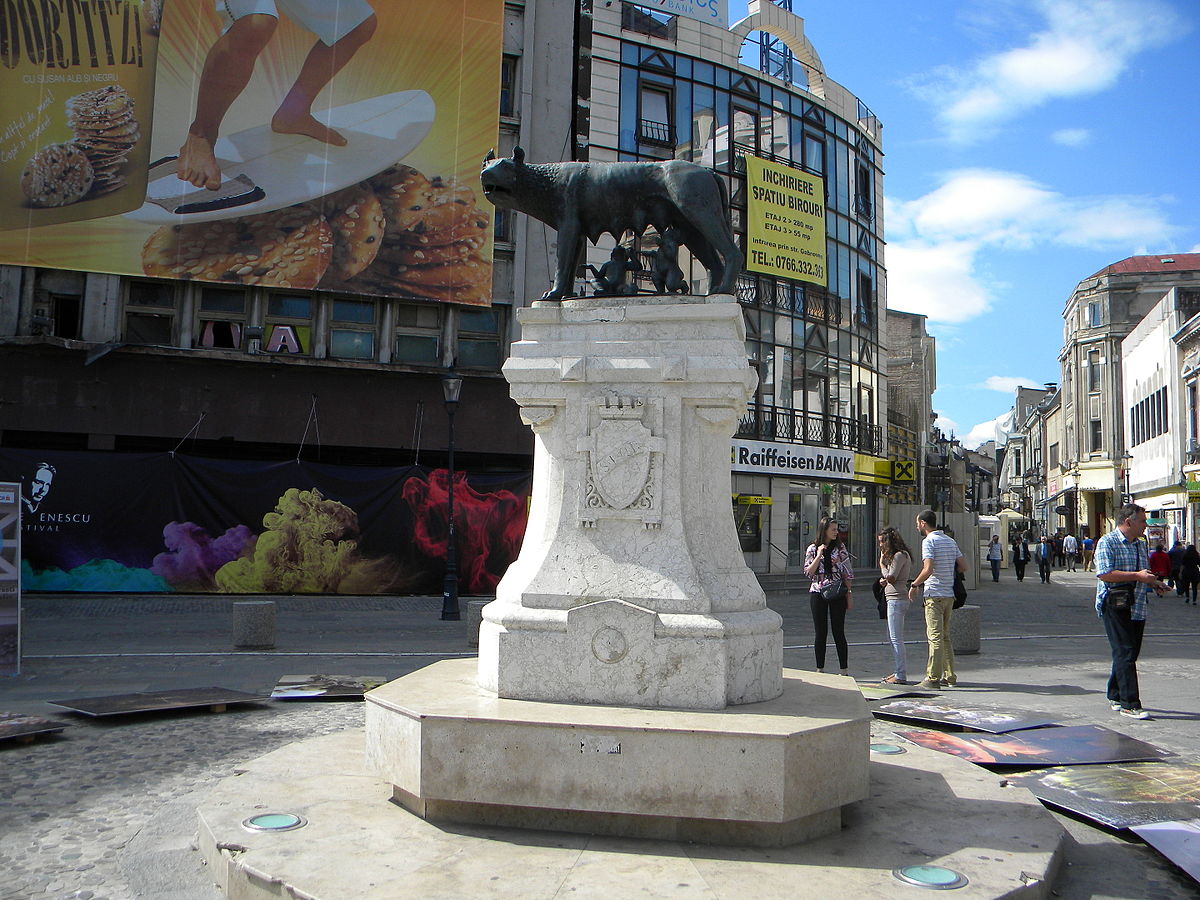The Cross of Desiderio, one of the most representative and precious artefacts of the Museum of Santa Giulia, made of wood and covered with a metal foil embellished with gems, is one of the largest budded crosses that have come down to us. The cross was donated, according to tradition, by the Lombard king Desiderio and his wife Ansa to the monastery, which they themselves founded.It is covered with as many as two hundred and eleven gems set on the four arms and, unique case among the known crosses, has the largest number of reused ancient gems, about fifty, many of them from previous ornaments.
At the intersection of the arms are two large medallions where stand out, on the recto, the Christ on the throne cantilevered, believed to be the work of the IX-X centuries, surrounded by four miniatures (X-XVI century AD), and, on the reverse, the Christ crucified, added in the sixteenth century. The stones of the Imperial and Late Antiquity ages are found mainly on the reverse of the cross and their high number testifies to the considerable availability of high quality glyptic material that must have come from ancient imperial treasures. The stones tell us about myths and fantastic stories, among them are particularly noteworthy: a sardonic cameo with the Muses and one with Pegasus, the winged horse, and Bellerophon; a chalcedony in two layers with the fight between Hercules and Onfale, the Queen of Lydia; a cameo with a laurel crowned Victory, very similar to the winged Victory in the museum; a cameo with an eagle, which in medieval times was probably interpreted as a symbol of Christ, and an onyx with a portrait of a Julio-Claudian princess. On the front, where medieval gems prevail, stands out the famous glass medallion with gold leaf portraits from the mid-third century AD: the medallion shows a family group, a mother with two children, and the inscription in Greek characters probably refers to the head of the family, Vunnerio Cerami.
The pieces attributable to the early medieval age constitute a very important nucleus as they are very numerous and probably contemporary to the working of the cross; among them two double layer pseudo-cameos (mid-eighth-ninth century A.D.) and eighteen moulded decorated glass paste gems, made in the same workshop, take on considerable significance. On them prevail portraits of classical echoes, in shades of blue and green, the predominant colour in the decoration of the cross. It is striking that there are no sacred subjects. Other rarities set in the "di Desiderio" cross are a portrait of Frederick II of Swabia, dating back to the 13th century A.D. and two very rare gems, produced by northern European craftsmen, of which only seven specimens exist in Italy and of these six are in Brescia: they are the so-called Alsengemme, two of which are set in the Cross of Desire and the other four in the Cross of the Field preserved in the old cathedral.
This masterpiece of early medieval goldsmith’s art can be dated













